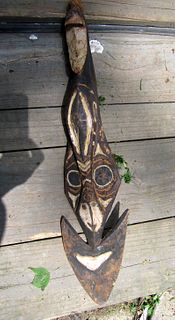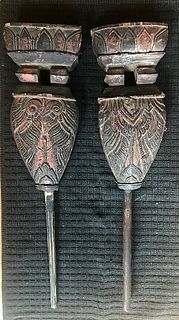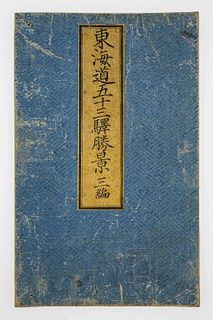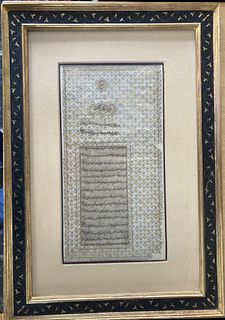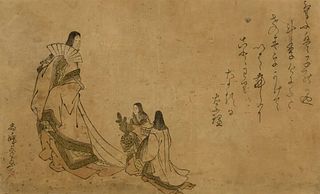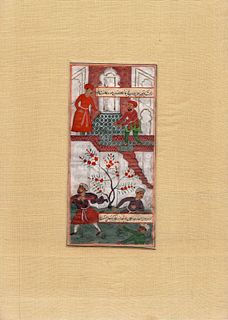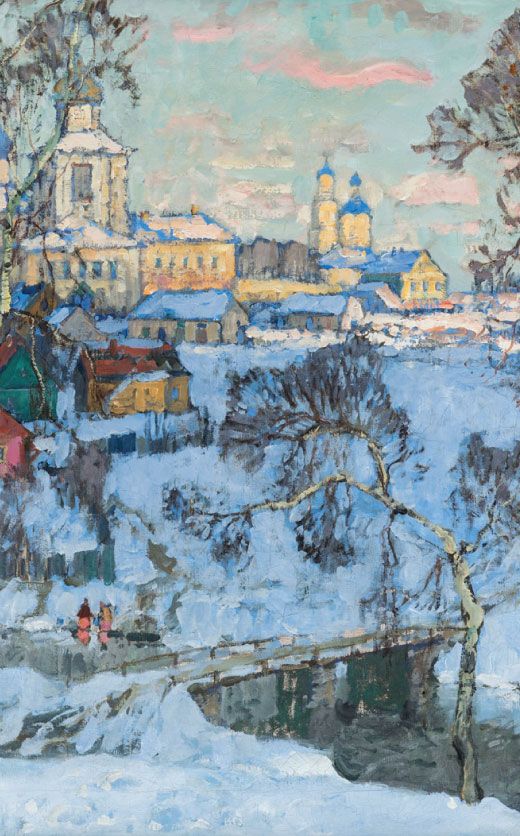Tibetan Rus Rgyan Bone Plaque of Dancing Citipati
Lot 26a
About Seller
Artemis Fine Arts
686 S Taylor Ave, Ste 106
Louisville, CO 80027
United States
Selling antiquities, ancient and ethnographic art online since 1993, Artemis Gallery specializes in Classical Antiquities (Egyptian, Greek, Roman, Near Eastern), Asian, Pre-Columbian, African / Tribal / Oceanographic art. Our extensive inventory includes pottery, stone, metal, wood, glass and textil...Read more
Categories
Estimate:
$1,000 - $1,800
Absentee vs Live bid
Two ways to bid:
- Leave a max absentee bid and the platform will bid on your behalf up to your maximum bid during the live auction.
- Bid live during the auction and your bids will be submitted real-time to the auctioneer.
Bid Increments
| Price | Bid Increment |
|---|---|
| $1 | $25 |
About Auction
By Artemis Fine Arts
May 1, 2025
Set Reminder
2025-05-01 10:00:00
2025-05-01 10:00:00
America/New_York
Bidsquare
Bidsquare : Fine Antiquities, Asian, Ethno, Fine Art
https://www.bidsquare.com/auctions/artemis-gallery/fine-antiquities-asian-ethno-fine-art-19334
Showcasing an extraordinary array of artifacts and art, including Egyptian, Greek, Roman, Etruscan, Near Eastern, Asian, Pre-Columbian, Native American, Tribal, Oceanic, Spanish Colonial treasures, fossils, fine and visual arts, and more! All ancient items are ethically sourced and legally available for sale. Enjoy the ease of in-house shipping for a seamless experience! Artemis Fine Arts info@artemisfinearts.com
Showcasing an extraordinary array of artifacts and art, including Egyptian, Greek, Roman, Etruscan, Near Eastern, Asian, Pre-Columbian, Native American, Tribal, Oceanic, Spanish Colonial treasures, fossils, fine and visual arts, and more! All ancient items are ethically sourced and legally available for sale. Enjoy the ease of in-house shipping for a seamless experience! Artemis Fine Arts info@artemisfinearts.com
- Lot Description
Central Asia, Tibet, ca. 19th to early 20th century CE. A carved bone plaque known as a rus rgyan, likely fashioned from either human bone or that of a large ungulate such as a yak. Slightly curved in form, the piece features intricate openwork carving depicting a pair of dancing citipati skeletons - symbolic guardians in Tibetan iconography - beneath a mantra symbol positioned above their heads. The rus rgyan is traditionally worn as a form of spiritual armor, believed to aid Tantric practitioners in overcoming shamanic influences and subduing the deities tied to those belief systems. Often referred to in Western scholarship as a "tantric apron," it was worn by ritual specialists and used in esoteric dance ceremonies central to Vajrayana Buddhist practice. Size: 7.75" L x 1.5" W (19.7 cm x 3.8 cm)Size: 7.75" L x 1.5" W (19.7 cm x 3.8 cm)
As noted above, this was probably crafted from human bone, which serve as a symbolic reminder of the Buddhist concept of universal impermanence - an idea that nothing lasts forever and that all living beings eventually face death. These bones, including skulls and other skeletal remains, are typically gathered from celestial burial sites. One such funerary practice, known as bya gtor (meaning "by the birds"), involves placing human corpses on mountaintops - often within designated charnel grounds (durto) - where they are left exposed to the elements or consumed by vultures. This method is widely practiced in Tibet for both religious and practical reasons. According to Vajrayana Buddhism, the spirit departs from the body after death, rendering the physical remains empty and available for the most selfless form of disposal: nourishing other living beings. Additionally, the harsh, frozen terrain of the Tibetan plateau makes traditional burials difficult, while the scarcity of trees limits the possibility of cremation. Some accounts suggest that once the flesh has decomposed or been eaten, the bones are crushed and fed to animals. However, other reports indicate that bones often remain intact on the durto. These open burial sites make it relatively easy to collect skeletal remains for the creation of ritual objects. The practice of bya gtor varies in its execution, leading to discrepancies among sources regarding its details. Furthermore, identifying the specific individuals to whom the bones once belonged is nearly impossible. That said, religious texts prescribe particular types of bones for different ritual instruments. For instance, the thod-rnga, or damaru (a two-headed drum), is believed to be most potent when made from the skullcaps of a 16-year-old boy and a 12-year-old girl.
Near complete rus rgyans or tantric dance aprons can be found at the Musee d'ethnographie de Geneve (MEG Inv. ETHAS 025404) and the Asian Art Museum, San Francisco (B60M101).
This item cannot be shipped to Georgia, Louisiana, or Tennessee. Please be advised that international shipping may have additional restrictions on some material, such as human bone. It is the customer's responsibility to be aware of their own local laws.
Provenance: private Los Angeles, California, USA collection, acquired in the 1980s
All items legal to buy/sell under U.S. Statute covering cultural patrimony Code 2600, CHAPTER 14, and are guaranteed to be as described or your money back.
A Certificate of Authenticity will accompany all winning bids.
We ship worldwide and handle all shipping in-house for your convenience.
SHIPPING EXCEPTIONS: Due to customs clearance issues, we are unable to ship to Germany, Switzerland and Australia. If you live in Germany, Switzerland or Australia, you will need to provide an alternate shipping destination, or we will not be able to complete your purchase. In addition, please note that we are unable to ship ancient items back to the original country of origin (Egyptian to Egypt, Greek to Greece, etc.)
PAYMENT EXCEPTION: Unless a known customer of Artemis, payment for all gold / precious metal / gem lots must be made via Bank Wire Transfer or Certified Bank Check/Money Order, no exceptions.
#193467Nice patina throughout. Intact and good condition. Verso has some wax and encrustations.Condition
- Shipping Info
-
All shipping is handled in-house for your convenience. Your invoice from Artemis Gallery will include shipping calculation instructions. If in doubt, please inquire BEFORE bidding for estimated shipping costs for individual items.
-
- Buyer's Premium



 EUR
EUR CAD
CAD AUD
AUD GBP
GBP MXN
MXN HKD
HKD CNY
CNY MYR
MYR SEK
SEK SGD
SGD CHF
CHF THB
THB





